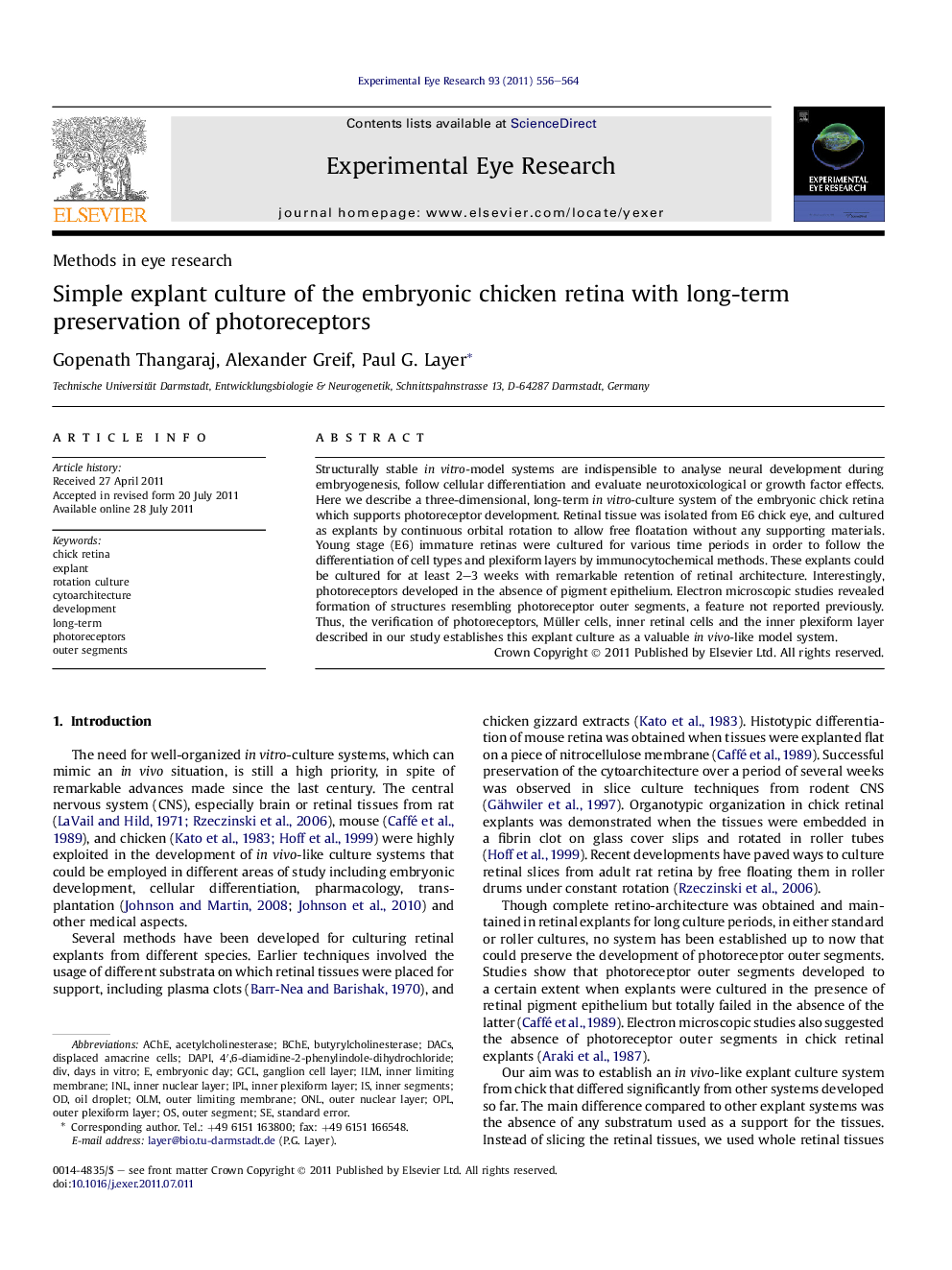| Article ID | Journal | Published Year | Pages | File Type |
|---|---|---|---|---|
| 4011598 | Experimental Eye Research | 2011 | 9 Pages |
Structurally stable in vitro-model systems are indispensible to analyse neural development during embryogenesis, follow cellular differentiation and evaluate neurotoxicological or growth factor effects. Here we describe a three-dimensional, long-term in vitro-culture system of the embryonic chick retina which supports photoreceptor development. Retinal tissue was isolated from E6 chick eye, and cultured as explants by continuous orbital rotation to allow free floatation without any supporting materials. Young stage (E6) immature retinas were cultured for various time periods in order to follow the differentiation of cell types and plexiform layers by immunocytochemical methods. These explants could be cultured for at least 2–3 weeks with remarkable retention of retinal architecture. Interestingly, photoreceptors developed in the absence of pigment epithelium. Electron microscopic studies revealed formation of structures resembling photoreceptor outer segments, a feature not reported previously. Thus, the verification of photoreceptors, Müller cells, inner retinal cells and the inner plexiform layer described in our study establishes this explant culture as a valuable in vivo-like model system.
► We propose a simple explant culture system of embryonic chick retina. ► The system provides long-term culture periods without any support materials. ► Retinal architecture is preserved throughout the culture period without distortions. ► We achieved development of photoreceptor outer segments that was never reported before. ► Highly feasible to follow normal developmental processes and allows easy manipulations.
